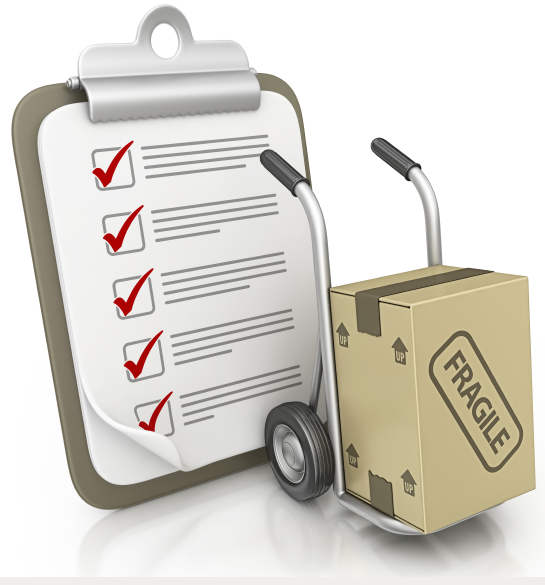Home Improvement
Your Indispensable Moving Checklist

So, you thought by the title you’d find a moving checklist. So sorry to disappoint you. On the other hand, a moving check is indispensable, what can help you stay on top of things as you prepare to move. To that end, we’ll look at what every checklist should offer. By searching online, you can find one that aligns with what we share here, enabling you to complete your move with ease.
60 Days Out
If you have two months or more of planning for a move, consider yourself blessed. For some people, all they get is six weeks, sometimes even four weeks or less. We’ll assume that the reader has at least two months to plan a move.
At 60 days out, you should begin to purge your home of its excess. Any items you haven’t used in the past year and probably won’t use again, should be set aside. Either sell or donate what you don’t have. Contact Goodwill or another nonprofit agency to haul off your stuff. Ask the charity to leave behind a receipt for tax purposes.
At this point you should research where you want to live, obtain a planner or an organizer, and ask your children’s school to prepare their records for your move.
45 Days Out
If you haven’t begun packing, then do so at this point. Begin to collect boxes by visiting retailers to find out what they have on hand. Hardware stores, grocery stores, mall retailers, and the like may have what you need.
By this time, you may have identified your new home. If not, you need to plan a trip to your future location, to shop for one. If your trip is successful, then make plans to buy that house. If it wasn’t successful, consider renting for six to 12 months. You can always buy later.
At this point, you’re ready to interview moving companies. Only choose a mover registered by the federal government, and one that is licensed and insured explains the Allied Moving Company.
30 Days Out
The clock is ticking and already you’re half way there to your move. It can seem as if time has gone by too fast — you’ll need to step things up if you’re behind.
At this point, you need to request medical records from your doctors as well as from the dentist and the veterinarian. Submit a change of address form to the post office and notify your creditors and banks of your move.
With a month left, you’re ready to step up the packing. Begin packing those items you plan to move, but aren’t using right now. This can be a good time to put away books, knick knacks, and seasonal equipment. You’ll keep packing until the day you move.
15 Days Out
With nearly two weeks left, you’re nearly ready to make your transition. This is a good time to go to your bank and remove the contents from your safe deposit box and close that account out. You should also get your car ready for the journey ahead.
If your move is local, you’ll need to take the day off from work to ensure that the move is accomplished in one day. If you’re moving further away, you’ll need to arrange for a longer time off from work.
1-7 Days Out
The week leading up to your move can be so stressful! Ease your mind by going over those things you have on your checklist. You should also contact your moving company to confirm your plans. Nail down a time for the movers arrival on moving day.
It is at this point you’ll want to tie up any loose ends. By now, you should have in your possession your medical and school records. If not, follow up. You should also pack your suitcases to have enough clothes and personal items on hand as you make the transition from one home to the next.
As the big day nears, empty your refrigerator and cupboards of food. Have only enough on hand to keep meals going until your move has been accomplished. Review your paperwork, contact the utility companies to have your utilities turned off the day after your move, and plan your payment to the moving company.
On Moving Day
On the day of your move, rise early to prepare for the truck’s arrival. You may find that having your family sleep elsewhere the night before is the better approach. When the movers arrive, verify that they’re the company you hired. Stay around while the movers pack your belongings, then sign the bill of lading just as the company completes loading the truck.
Finally, lock the house, turn the keys over to your real estate agent or directly to the new owners, get in your car and head out to your new home. Job well done!
-

 Tech11 years ago
Tech11 years agoCreating An e-Commerce Website
-

 Tech11 years ago
Tech11 years agoDesign Template Guidelines For Mobile Apps
-

 Business6 years ago
Business6 years agoWhat Is AdsSupply? A Comprehensive Review
-

 Business10 years ago
Business10 years agoThe Key Types Of Brochure Printing Services
-

 Tech8 years ago
Tech8 years agoWhen To Send Your Bulk Messages?
-

 Tech5 years ago
Tech5 years ago5 Link Building Strategies You Can Apply For Local SEO
-

 Law5 years ago
Law5 years agoHow Can A Divorce Lawyer Help You Get Through Divorce?
-

 Home Improvement6 years ago
Home Improvement6 years agoHоw tо Kеер Antѕ Out оf Yоur Kitсhеn































